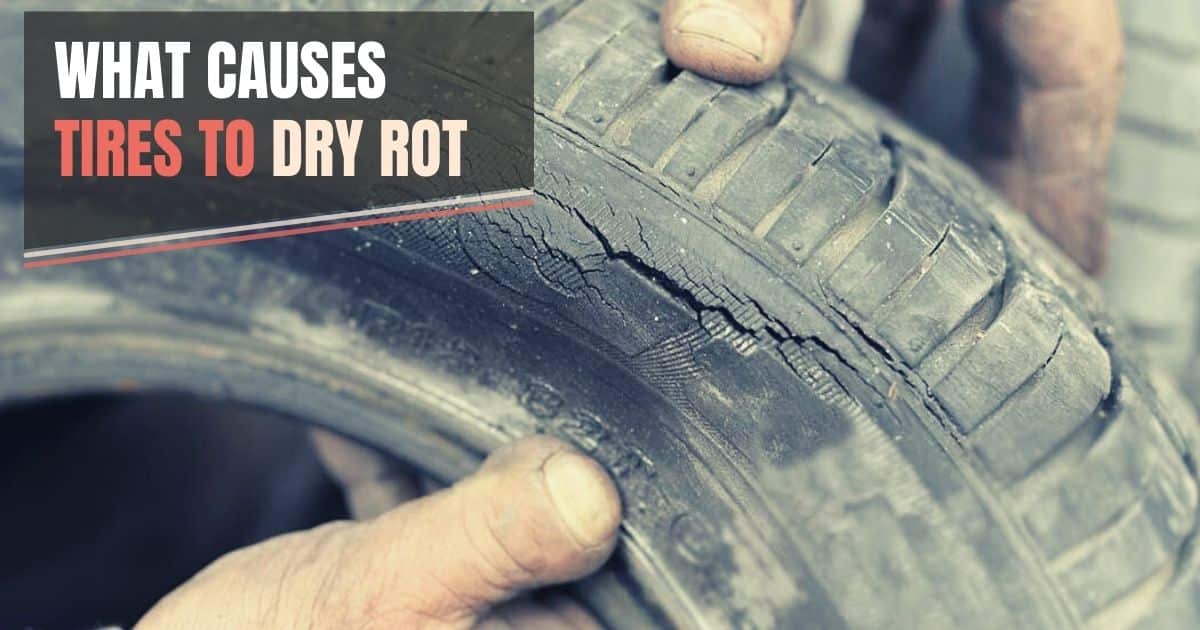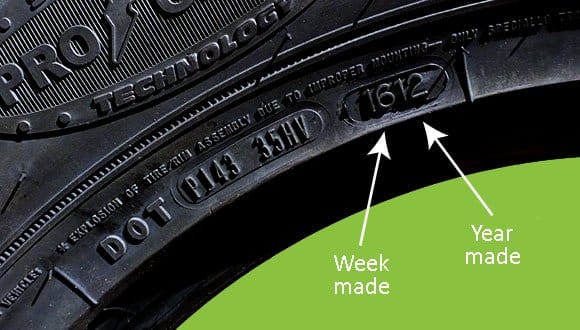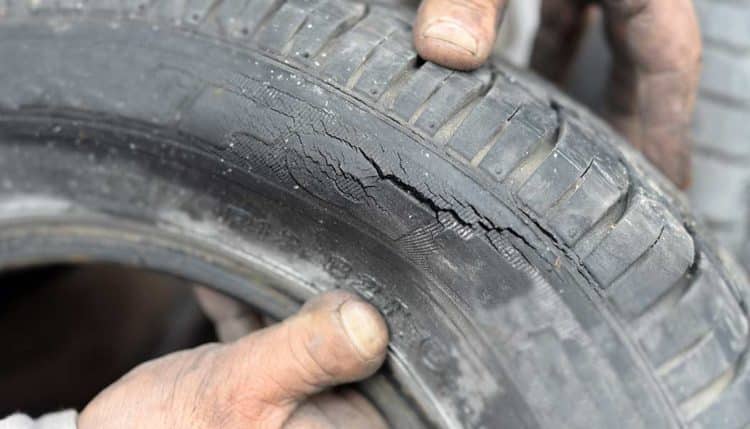
Newer premium and high-quality tires can be your best friends for years. No matter how much you may or may not dive on them, your car tires can last for years without showing signs of wear and tear. However, if your tires are particularly old or have been at the mercy of the elements, it is possible for you to start noticing signs of aging. These signs appear in ways such as cracking, flaking, and discoloration. These are the symptoms of dry rot.
As soon as you see these signs, you should replace your tires or at a minimum have a professional inspect them. Here’s all you need to know about recognizing, preventing, and remedying dry rot.
What is Tire Dry Rot?
Unlike what happens to food and organic matter, dry rot in tires is not caused by bacteria or fungi – but it can be just as dangerous. If you have noticed that your tires present spiderweb cracks, discoloration, and general dryness, that is dry rot. It looks like aged weathered rubber.
Dry rot, also known as sidewall weathering, is a condition that leads to visible cracking of the tires. It can affect the tread and sidewall, thus decreasing the tire’s level of safety, traction, and maneuverability. It is a direct sign that the rubber is weak and is a structural issue that can impact the overall integrity of the tire. Dry rot can cause the tires to deteriorate prematurely and put you in danger of a blowout!
How To Recognize The Signs of Dry Rot
High-quality tires can last for many years and cover many thousands of miles. Since they are made of a petroleum-based material, they are prone to deterioration after several years of use. Factors such as climate, humidity, use, vehicle storage, temperature, and air pressure are all influential factors in determining the lifespan of your tires.
However, if you have noticed that the surface, tread, and sidewall of your tires are becoming covered in cracks and the rubber looks dry and brittle, a dry-rot might have taken hold of the material and degrade your tires.
Some of the symptoms of this condition include:
- A breakable, dry, or brittle appearance
- Diagonal cracks in the tire sidewall
- Cracking of the tread pattern
- Discoloration and fading of the rubber color
What Causes Tires to Dry Rot?
Dry-rot usually arises from several reasons, including:
- Extended periods of disuse, especially if the car is parked or stored in unfavorable environmental conditions (extreme heat or constant sun exposure).
- Low air pressure in the tires creates excessive wear.
- Exposure to ultraviolet (UV) rays and high ozone concentrations
- Storing tires in high temperatures
- The tire storage is near electric motors, generators, or welding equipment that generates ozone.
Age and sitting out in the sun are another big contributer. This is also why junkyard tires can be dangerous or a used tire pile sitting on the side of a service station. Any tires sitting outside that look like there being given away for free, need to be inspected for dry rot.
How To Prevent It
Preventing dry rot is not difficult, and you can do so with minimal car maintenance.
The golden rules to guarantee your tires the longest lifespan and prevent the deterioration related to dry rot include:
- Take care of your tires when mounted on the car and when stored.
- Protect them from damaging agents such as UV rays, direct sunlight, high temperatures, and ozone-generating sources.
- Drive your car on a regular basis as periods of inactivity can worsen the tires’ quality and health.
- Keep the tires properly inflated (check the air pressure at least once a month). This will stop the tires from becoming worn down in certain areas and can optimize fuel efficiency and road safety..
- Inspect the sidewall and tread to identify the early signs of dry rot.
- Clean and protect the tires using dish soap and avoid exposure to harmful chemicals and products.
- Avoid overloading your vehicle as this will put unnecessary and excessive pressure on the tires. You should check the recommended load capacity of your vehicle and ensure that you are within standards.
Sometimes, long-term parking or periods of disuse are inevitable. If you need to leave your vehicle unused for some time, make sure it is in the best location possible. To pick the right parking space, make sure it is covered, away from UV rays and direct sunshine, and in a location not subjected to drastic temperature changes.
For more on prevention, read here.
If Your Tires Are Old Check The Age Before They Dry Rot
Age is a big factor that can cause dry rot. You should never buy a tire that is more then six years old. Additionally you should consider repacing your tires every 6 to 10 years regardless of the mileage. This is because the chemicals in the the rubber compound begin to break down and weaken.
If you want to check your tires age you can look for the DOT code on your sidewall..

This tire was made in the 16th week of 2012
Check For Dry Rot Today
With proper maintenance, you can prevent the issues related to dry rot. Nonetheless, with time, your tires can start to show signs of wear and tear. And, of course, where you live, drive, and park your car will make a difference in the tires’ lifespan. However, dry rot is not something to be ignored, and can significantly decrease the level of safety while on the road, fuel efficiency, traction, and driving performance. Get your tires checked today!
